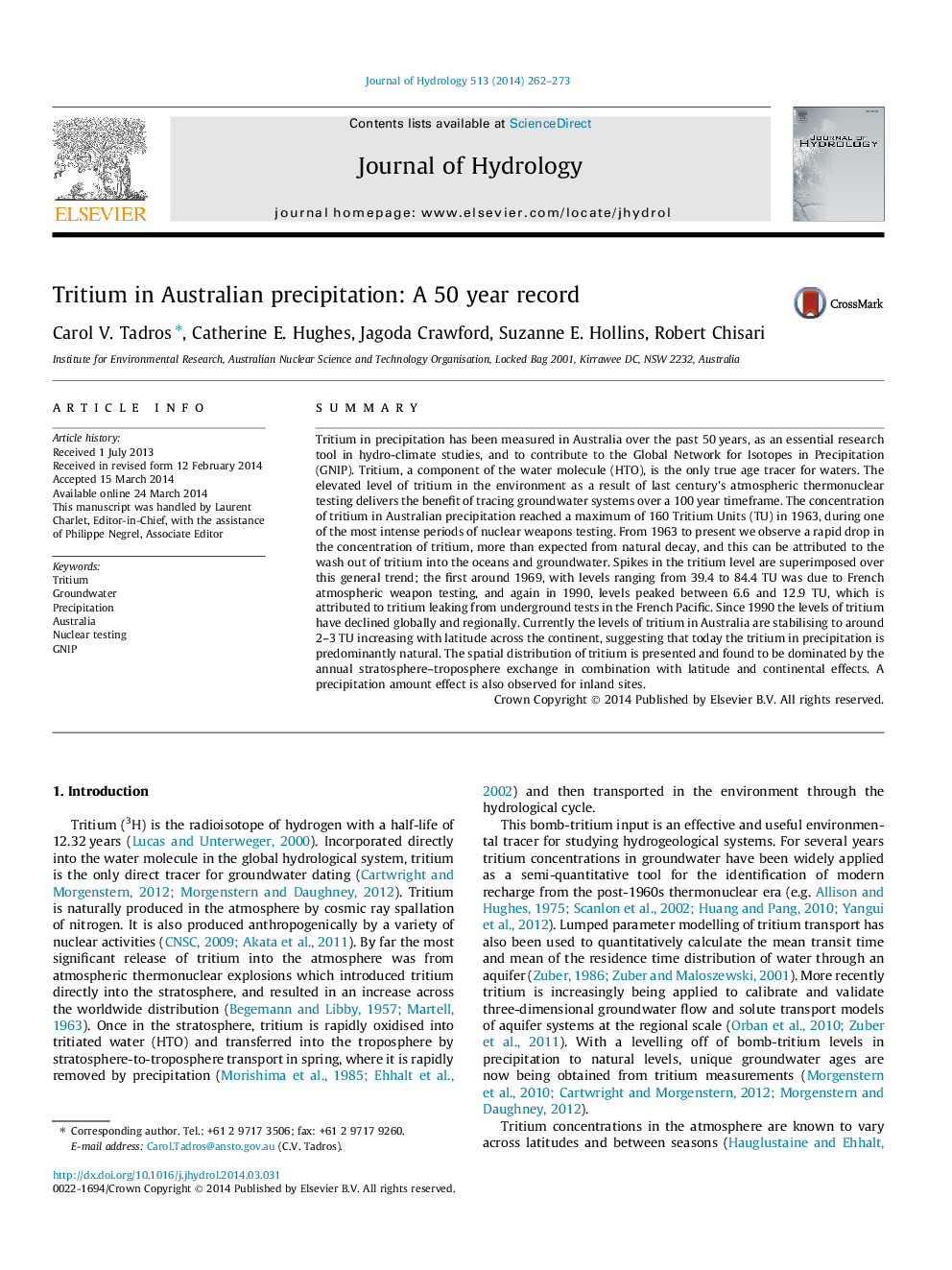| کد مقاله | کد نشریه | سال انتشار | مقاله انگلیسی | نسخه تمام متن |
|---|---|---|---|---|
| 6412754 | 1629935 | 2014 | 12 صفحه PDF | دانلود رایگان |
- The three phases of elevated 3H levels are due to different nuclear testing regimes.
- A seasonal, ocean-continental and latitudinal trend is evident across the continent.
- A precipitation amount effect is observed in monthly tritium data.
- Variability of modern tritium rainfall to Australian groundwater is estimated.
- Background 3H levels are lower than previously assumed for much of the continent.
SummaryTritium in precipitation has been measured in Australia over the past 50Â years, as an essential research tool in hydro-climate studies, and to contribute to the Global Network for Isotopes in Precipitation (GNIP). Tritium, a component of the water molecule (HTO), is the only true age tracer for waters. The elevated level of tritium in the environment as a result of last century's atmospheric thermonuclear testing delivers the benefit of tracing groundwater systems over a 100Â year timeframe. The concentration of tritium in Australian precipitation reached a maximum of 160 Tritium Units (TU) in 1963, during one of the most intense periods of nuclear weapons testing. From 1963 to present we observe a rapid drop in the concentration of tritium, more than expected from natural decay, and this can be attributed to the wash out of tritium into the oceans and groundwater. Spikes in the tritium level are superimposed over this general trend; the first around 1969, with levels ranging from 39.4 to 84.4 TU was due to French atmospheric weapon testing, and again in 1990, levels peaked between 6.6 and 12.9 TU, which is attributed to tritium leaking from underground tests in the French Pacific. Since 1990 the levels of tritium have declined globally and regionally. Currently the levels of tritium in Australia are stabilising to around 2-3 TU increasing with latitude across the continent, suggesting that today the tritium in precipitation is predominantly natural. The spatial distribution of tritium is presented and found to be dominated by the annual stratosphere-troposphere exchange in combination with latitude and continental effects. A precipitation amount effect is also observed for inland sites.
Journal: Journal of Hydrology - Volume 513, 26 May 2014, Pages 262-273
